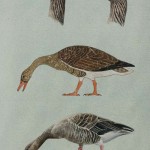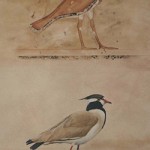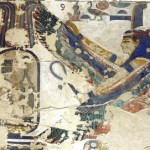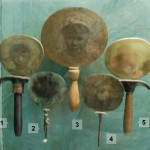Shabtis in Croatian Private Collections and Museums
Abstract
Approximately 5,000 Egyptian artefacts are housed in the more than twenty museum and known private collections in Croatia (4,042 in museums and circa 1,000 in private collections) dating from the 4th millennium BC to AD 641. There are 375 shabtis in nine museums and the known private collections in Croatia. Most (346) came from the Pharaonic periods of Ancient Egypt, but an additional 26 shabtis and 3 pseudoshabtis were unearthed during excavations in the territory of the Roman provinces of Dalmatia and Pannonia (today in Croatia). These shabtis were usually connected with the diffusion of the Egyptian cults during Graeco-Roman periods (c. 4th century BC to the 3rd century AD). The largest collection of shabtis is held in the Archaeological Museum in Zagreb (312). These shabtis were collected over a long period of time, from 1865 to today, and from various sources, but most are of unknown provenance. My analysis showed that all shabtis are genuine. They were crafted between the Middle Kingdom (AMZ, inv. no. E-310) and the 3rd c. AD. The following analysis of the shabtis showed that almost all known types and forms of shabtis can be found in Croatian collections. [more…]
The sAb in the Old Kingdom: a consideration of the title within the scope of a prosopographic study
Abstract
The article aims to give an overview of the activities of the bearer of the title sAb in the Old Kingdom and to propose a definition for it. It is based on the analysis of more than 500 documents, citing 76 titles including the term sAb and to collate all these in the titularies of the individuals concerned. It also attempts a brief description of the nature of the functions of the practitioners of justice, citing the autobiography of Weni. It further points up the connections to judicial institutions and the references to actions of a judicial nature, but also emphasises the “non-judicial” spheres involving the sAb. The article formulates a basic structure, centred round the knowledge and practice of law and orientated towards various sectors, such as the administration of the State in its diverse facets, the function of the judiciary and the management of patrimony in the great temples through specialisation. The term sAb could be the hallmark of the title holder in the field of law, but without confining him to the specific function of a sole judge. [more…]
Bloggers, Antiquities and Egypt’s Revolution
In the last week of March 2011 an UNESCO team visited Egypt to meet with the new Minister of Culture and try to understand the state of the country’s antiquities following widespread reports of vandalism, theft and looting. Egypt has seven World Heritage Sites: six cultural heritage sites and the fossilized mangroves of the Faiyum’s Whale Valley. [more…]

The Geese of Meidum
This iconic painting from the Old Kingdom Mastaba of Nefermaat and Itet is in The Egyptian Museum in Cairo and consists of three pairs of birds on one register. The right-hand central pair are universally accepted as Red-breasted Goose, Branta ruficollis, and the left-hand central pair as Greater White-fronted Goose, Anser albifrons. [more…]

The Rekhyt
The hieroglyphs of the rekhyt, Gardiner sign G23 or G24 have previously only been identified as the “black”-backed Northern Lapwing Vanellus vanellus. However, apart from its colours, the Northern Lapwing has two other key identification features, a crest and a solid black breast. [more…]
Gantenbrink’s Door – Part I: the Orginal Discovery
Although we now know that there is chamber at the end of the shafts in the Queen’s Chamber of the Great Pyramid, I still remember first hearing in the late 1990s that something had been found. The whole affair was shrouded in secrecy, back in the days when Dr. Hawass was the Director in charge of the Giza Plateau rather than Minister of State, the position he holds today. [more…]

Television Review: Egypt’s Lost Cities
“Space Archaeology” is the new buzzword adopted by the BBC in its documentary “Egypt’s Lost Cities.” Not to be confused with the branch of archaeology studying orbiting space debris, it describes instead the use of satellite images to locate archaeological remains beneath the earth’s surface. [more…]
Le sAb à l’Ancien Empire: une Approche du Titre en Marge d’une étude Prosopographique
Le sAb à l’Ancien Empire : une approche du titre en marge d’une étude prosopographique Etienne Vande Walle [Editors’ Note – this the orginal French text. An English translation appeared in the Journal on 30th June 2011.] A l’occasion de l’examen de 522 titulatures d’Ancien Empire contenant le terme sAb nous avons pu constater […] [more…]
 By
By 
